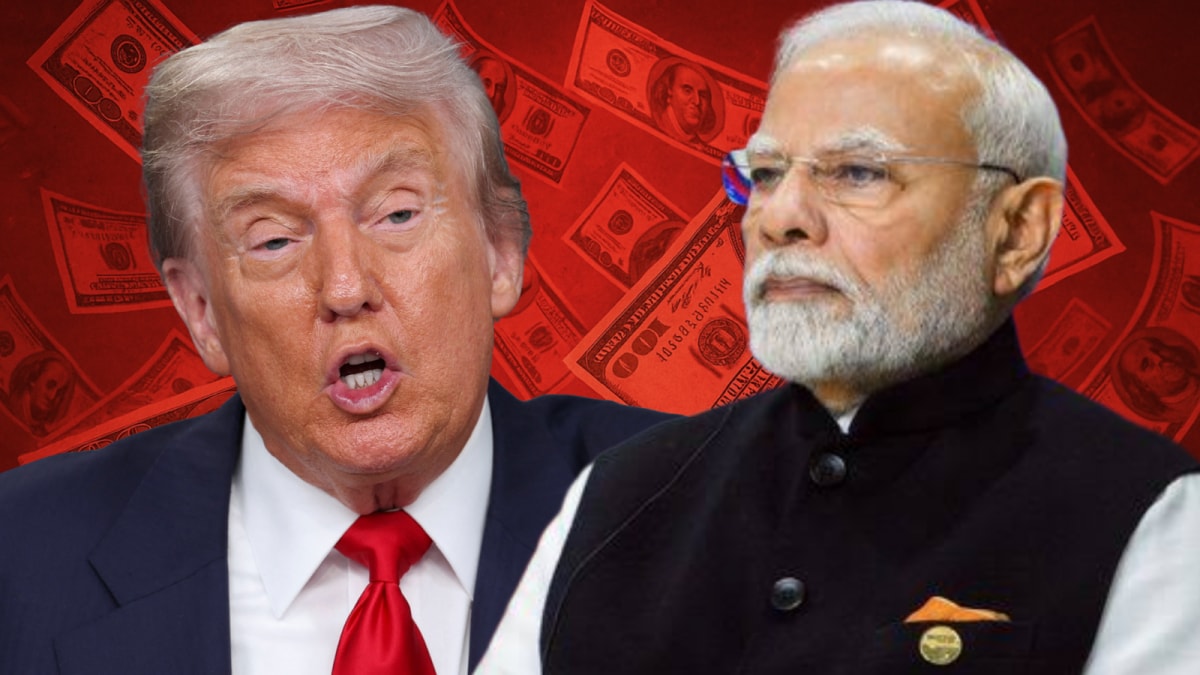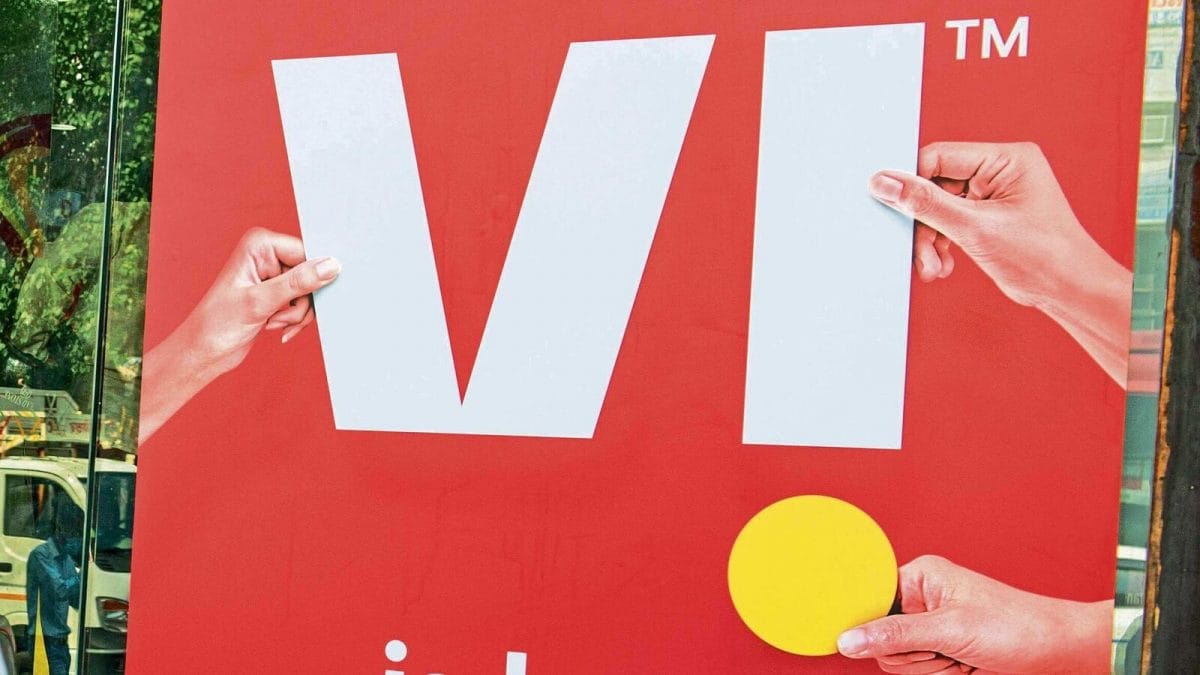Last Updated:
India’s MSMEs are on the frontline as Trump’s tariff wall hits over $60 billion in exports. Not all sectors are affected equally. Here’s who’s losing and who’s escaping the blow

India’s exporters, particularly in textiles, jewellery, pharmaceuticals, and electronics, are already pivoting toward alternative markets, all while prices go up in the US.
The United States’ 50 per cent tariff measure on Indian goods is set to take effect at 12:01 am EDT (9:31 am IST) today. This includes a second 25 per cent duty added to the 25 per cent hike already notified earlier this month. The US Department of Homeland Security has confirmed that the higher rate will apply to any Indian goods “entered for consumption or withdrawn from warehouse for consumption” on or after this time.
The move is the culmination of US President Donald Trump’s ongoing tariff campaign targeting countries that maintain economic ties with Russia, with India being a key buyer of Russian crude. The hike has drawn strong condemnation from New Delhi, while Moscow has backed India’s right to choose its own trade partners.
How Much Of India’s Trade Will Be Impacted?
According to estimates by the Global Trade Research Initiative (GTRI), nearly two-thirds of India’s total exports to the US, worth $60.2 billion out of $86.5 billion in FY25, will now fall under the higher 50 per cent tariff bracket. Government estimates peg the impacted exports slightly lower, at around $48.2 billion.
The hardest-hit sectors are those where India has a labour-intensive edge and a significant dependency on the US market. If the duties remain in place, GTRI projects that Indian exports to the US may drop to $49.6 billion in FY26, effectively reversing nearly five years of export growth.
Which Sectors Will Be Most Affected?
The biggest shock will be felt in textiles, gems and jewellery, seafood, chemicals, and auto parts — sectors that have powered India’s export engine for years and together employ millions of workers, especially in small and medium enterprises (SMEs).
Textiles and Apparel
The US is India’s largest buyer of textiles, with exports exceeding $10.8 billion a year. The sector, already under pressure from cheaper players like Bangladesh and Vietnam, is now faced with 63.9 per cent effective duties, wiping out any price advantage. The Tiruppur cluster, which alone accounts for 30 per cent of India’s ready-made garment exports, is among the most exposed. Tiruppur, in Tamil Nadu, is a global hub for cotton knitwear and supports over 600,000 workers.
Exports of ready-made garments alone were worth $5.33 billion in FY25.
Gems and Jewellery
Exports worth $9.94 billion to the US, nearly one-third of the industry’s global trade, will now face 52.1 per cent total duties. Surat, which handles 80 per cent of India’s diamond processing, is already reporting order halts and layoffs.
Shrimp and Seafood
The US accounts for around 50 per cent of India’s shrimp exports, valued at $2.4 billion, or roughly Rs 20,000 crore. With the total duty now reaching 60 per cent, Indian exporters are warning that they will be priced out by Ecuador, whose shrimp face just 15 per cent duties. Ecuador’s trade pact with the US gives it preferential access.
Carpets, Furniture, and Home Textiles
Carpet exports stood at $1.2 billion in FY25, and now face 52.9 per cent effective duties. Rising inflation in the US has already dampened demand, and the new tariff wall may push buyers toward Turkey or Vietnam.
Leather and Footwear
Both leather goods and footwear are now subject to the full 50 per cent tariff, adding further strain to a sector already battling rising raw material and logistics costs.
Auto Components
India’s auto component exports to the US stood at $6.6 billion in 2024. Of this, $3.4 billion, mainly parts for cars and small trucks, will face a 25 per cent tariff, while the rest will be subject to the full 50 per cent rate.
Key segments like gearboxes and transmission systems, where India has a 40 per cent US market share, are likely to lose ground to suppliers in Mexico or Europe.
Chemicals and Organic Compounds
With $2.7 billion in annual exports and a 40 per cent SME share, India’s chemicals sector will face intensified competition from countries like Japan and South Korea, who enjoy preferential US tariff rates. Organic chemicals specifically will be subject to a 54 per cent effective tariff.
Agricultural and Processed Foods
Indian exports of basmati rice, tea, spices, and other farm products worth $6 billion will now be subject to the full 50 per cent duty, placing them at a disadvantage against similar goods from Thailand and Pakistan. India is currently the world’s largest exporter of basmati rice, and any price hike in the US could see a major loss of market share. Processed foods too are in the high-duty category.
Which Sectors Have Been Exempted?
A few key sectors have been exempted or partially insulated, at least for now.
Pharmaceuticals
India’s generic drugmakers, who account for $10.52 billion in exports to the US, will not be subject to the new duties. However, Trump has warned that pharmaceutical companies relying on Indian manufacturing may face pressure to shift operations to the US in the near future.
Electronics
Devices like iPhones, assembled in India for the US market, are currently excluded from the tariff hike due to existing exemptions under earlier bilateral arrangements. That said, Trump has already targeted Apple and other tech firms with warnings about offshored production.
India’s electronic goods exports to the US stood at $14.64 billion in FY25, making it the country’s second-largest export category to the US.
Steel and Base Metals
While key inputs like steel and aluminium have faced 25–50 per cent tariffs since April, most Indian SMEs export long steel products and re-rolled metals, while the US typically imports flat products. As such, steel’s exposure to this round is limited. The US accounts for just 1 per cent of India’s steel exports.
Petroleum Products and Others
Petroleum product exports worth $4.1 billion in FY25 are exempted, along with categories like books, brochures, plastics, cellulose ethers, ferromanganese, ferrochromium, and server hardware, including motherboards and rack servers.
Estimates suggest that around $27.6 billion worth of Indian exports will escape the steeper duties for now.
Why MSMEs Are At The Heart Of The Crisis
The brunt of the US tariff hike will fall squarely on India’s micro, small and medium enterprises (MSMEs), the backbone of the country’s export economy. According to Crisil, these firms account for over 70 per cent of India’s export capacity in key sectors such as textiles, gems and jewellery, seafood, and chemicals — all of which are now directly in the tariff line of fire.
These MSMEs, often concentrated in single-sector industrial clusters like Tiruppur (garments), Surat (diamonds), Panipat (home textiles), and Morbi (ceramics), operate on low margins and are highly price-sensitive. Even minor increases in input or logistics costs can derail production. A 50 per cent tariff essentially strips them of price competitiveness in the US, their most valuable market.
Compounding the crisis is the earlier withdrawal of India’s Generalized System of Preferences (GSP) benefits in 2019, which already made exports costlier. Without that safety net, MSMEs have been struggling to retain buyers in price-conscious markets like the US. Now, with tariffs more than doubling in many categories, a large number of these firms face order cancellations, halted shipments, and production slowdowns.
As Pushan Sharma, Director at Crisil Intelligence, said in an assessment quoted by the Times of India, even “partial absorption of the increased product prices due to higher tariffs” could “squeeze already slim margins” and lead to widespread job losses, particularly among contract and daily-wage workers who dominate MSME employment.
Can India’s Economy Withstand The Blow?
While exporters are bracing for the worst, macroeconomic analysts remain cautiously optimistic. Both Fitch and Morgan Stanley have reiterated their 6.5 per cent GDP growth forecast for FY26, citing:
- India’s low goods-export-to-GDP ratio
- Strong domestic demand in sectors like telecom, cement, services, and aviation
- A potential uptick in domestic consumption of products now facing export hurdles
Exports of goods form just around 20 per cent of India’s GDP, giving some cushion against external shocks. Even so, the loss of external demand could reduce rural job creation and slow the momentum in industrial clusters heavily reliant on exports to the US.
What Can Exporters And Policymakers Do Now?
Diversify Export Destinations: India may need to aggressively pursue trade ties with Africa, the EU, ASEAN, and West Asia to reduce dependence on the US market.
Streamline Compliance and Cost Structures: Exporters will need better automation tools to navigate changing documentation, tariff classifications, and shipping protocols, especially if other countries follow suit with policy shifts.
Boost Sector-Specific Support: Clusters like Tiruppur, Morbi, and Surat may require targeted interest subvention, faster duty drawback clearances, and dedicated export insurance to cushion immediate losses.
The Road Ahead
The 50 per cent US tariff wall is now reality. Its impact will not be evenly distributed; some sectors may absorb it better, others may face collapse unless prompt support and strategic redirection follow. Whether this marks a short-term jolt or a long-term realignment will depend not just on Washington, but on how quickly India adapts.

Karishma Jain, Chief Sub Editor at News18.com, writes and edits opinion pieces on a variety of subjects, including Indian politics and policy, culture and the arts, technology and social change. Follow her @kar…Read More
Karishma Jain, Chief Sub Editor at News18.com, writes and edits opinion pieces on a variety of subjects, including Indian politics and policy, culture and the arts, technology and social change. Follow her @kar… Read More
Read More








